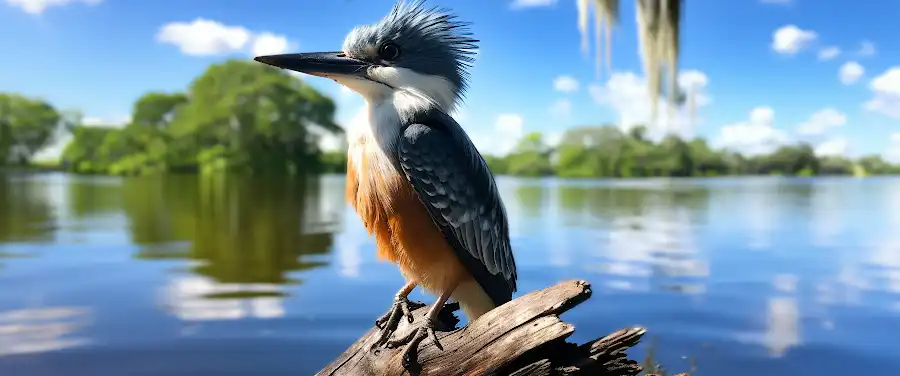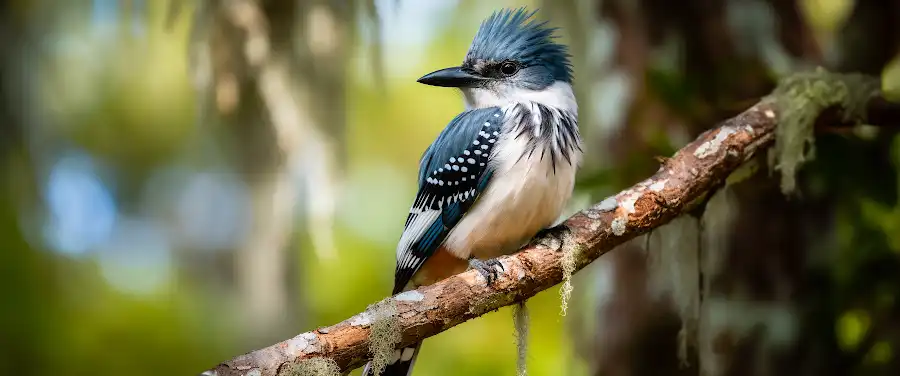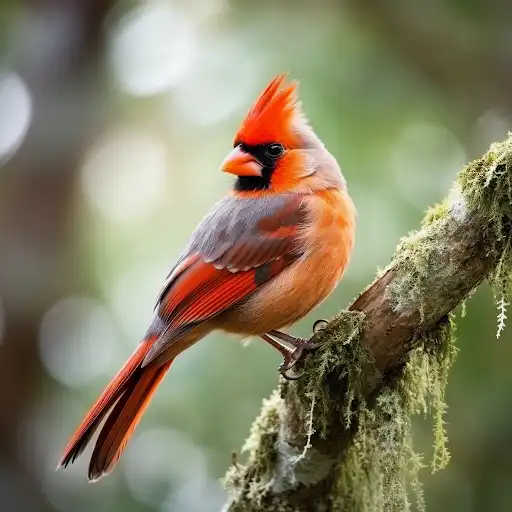
Birdwatchers, nature enthusiasts, even casual observers: lend me your ears, or rather, your eyes. Imagine standing amid the lush greenery of Central Florida, your gaze scanning the azure sky as it plays host to a myriad of lively, vividly plumaged creatures. For a moment, you may feel that Mother Nature herself has spilled her colorful palette, bringing to life these flying wonders, painting the airways above this spectacular region in rainbow hues. This spectacle, folks, is what makes Central Florida like the mythical ark of the avian world. Yet beneath this exquisite beauty lies a profound secret: the gripping tale of protected bird species.
The protection of these bird species is more than just environmental stewardship; it’s a romance between mankind and the realm of avians. Learning about different bird species’ needs and habitats, stretching the limits of our empathy to include them, reminds us of our intrinsic connection to all life forms. Bird conservation efforts in entrancing Central Florida are not just about protecting our feathery friends; it’s also about safeguarding our shared home and ensuring the vibrant biodiversity continues to flourish.
If you ever ponder the underlying purpose of these tireless conservation efforts, the explanation is as fascinating as it is deep-seated. It’s not always about the spectacle of colorful feathers or enchanting bird songs. Protection extends into a more profound arena, where biodiversity takes center stage. Because, believe it or not, the health of these protected birds is a powerful indicator of the landscape’s overall well-being. In other words, preserving these species is akin to maintaining a living, breathing report card of our environment’s health.
Now, let’s delve deeper into this mysterious world of Central Florida’s bird species, and open our minds and hearts to the feathered inhabitants of this idyllic paradise. Tune in, because up next, you’ll discover exactly how many bird species call Central Florida home.
Why are Certain Bird Species Protected in Central Florida?

Florida, known as the “Sunshine State,” is famous for its idyllic beaches, theme parks, and unique wildlife. But, there’s another reason to love Central Florida – it’s a haven for numerous protected bird species. Over the years, human activities and environmental changes have posed significant threats to diverse bird species, pushing many towards the brink of extinction. In light of this, protected species have emerged as a global conservation concept to salvage this situation. So, let’s dive deeper into why Central Florida has a significant number of protected bird species.
A protected species is a group of organisms that enjoys special protection status under the law. The concept aims to prevent the extinction of at-risk species and maintain biodiversity, which is critical for the ecosystem’s health.
Over time, numerous factors have driven bird species into the endangered zone, prompting urgent conservation efforts. One primary cause lies in the loss of habitat due to industrial development, natural phenomena, and expanding human settlements. Similarly, pollution, especially plastic and oil spills, has significantly affected birds’ survival, particularly those depending on the water bodies. Moreover, illegal hunting and capturing of birds for the pet trade has significantly reduced bird populations.
To combat these challenges, the government and wildlife protection agencies play critical roles. Through laws such as the Endangered Species Act, the government ensures strict protection for endangered species, including birds. Across Central Florida, numerous wildlife refuges have been established to protect and conserve diverse bird species.
It’s noteworthy to mention that collaboration between wildlife protection agencies, scientists, and conservationists is crucial for successful bird conservation. They collect critical information about bird populations, track changes, identify threats and develop practical conservation strategies. For instance, the Florida Fish and Wildlife Conservation Commission is at the frontline of bird conservation in the state, providing critical data and leading control programs.
Here’s a quick list of the actions taken for bird conservation:
- Creation of protected areas like sanctuaries and reserves
- Legal protection to endangered bird species
- Cleanup programs to reduce pollution in bird habitats
- Awareness programs educating the public about bird conservation
These actions serve as testament to the tremendous work being done to conserve bird life, reminding us all that each of us has a role to play in this endeavor.
The Journey Ahead
Although much progress has been made, the journey towards comprehensive bird conservation in Central Florida continues. Bird conservation is not just about protecting birds; it’s about preserving the state’s unique ecosystem and ensuring future generations can enjoy the diverse and rich bird life. So, as we keep exploring the mystery of Central Florida’s protected birds, let’s also remember the responsibility we all share to protect these fascinating creatures.
With that said, it’s time to look at some of the commonly seen and protected species making Central Florida their home!
Which are Some of the Protected Bird Species in Central Florida?

Central Florida, a treasure trove of biodiversity, is a haven for numerous, unique bird species. These denizens of the sky are rich and varied, each with its own distinct set of traits and habitats. Four of these protected bird species that grace Florida’s verdant plains and azure waters include: the Reddish Egret, the Florida Sandhill Crane, the Everglades Snail Kite, and the endangered Florida Grasshopper Sparrow. The population estimates of these bird species vary widely, highlighting the importance of their conservation status.
Why is the Reddish Egret a Protected Species in Central Florida?
One glance at the Reddish Egret, and you’ll understand why it deserves protection. With its rust-colored plumage and balletic hunting dance, this bird is stunning in its beauty. Yet it faces daunting conservation challenges, not least of which is the loss of coastal habitats due to burgeoning human activities.
Historically, the Reddish Egret was hunted extensively for its plumage, tragically decimating populations. Today, conservation efforts have had a significant impact, and these elegant birds now number around 2,000 breeding pairs in Florida, according to the Florida Fish and Wildlife Conservation Commission.
Nonetheless, the Reddish Egret’s survival continues to hang in the balance, making concerted conservation attempts vital.
How is the Florida Grasshopper Sparrow Being Protected?
Named after its insect-like call, the Florida Grasshopper Sparrow is an endearing yet imperiled bird. So small that it’s often overlooked, this petite bird is indeed a marvel of nature clinging on in the face of adversity.
The Florida Grasshopper Sparrow faces threats from habitat loss due to development and fire suppression, driving it towards the brink of extinction with less than 150 individuals remaining in the wild, as stated by The Audubon Society.
However, not all is gloom and doom; numerous bird enthusiasts and conservation organizations are going to great lengths to ensure the sparrow’s recovery. Their protective measures have ranged from captive breeding programs to habitat restoration efforts to ensure this bird song doesn’t fade away!
Taking solid steps towards conservation not just safeguards these birds but ensures a balanced ecosystem. As we continue our journey, let’s delve into the laws protecting these remarkable creatures in our next topic ” What are the Laws Protecting Bird Species in Central Florida?”
What are the Laws Protecting Bird Species in Central Florida?

The golden hues of morning sunlight illuminate an array of fuzzed heads peeking out from their nests. The vast biodiversity of protected bird species in Central Florida is an ornithologist’s dream; they comprise an element of the state’s natural beauty, a treasure which is recognized and protected by an assortment of local, state, and federal laws.
Statutes like the Migratory Bird Treaty Act, the Endangered Species Act and the Bald and Golden Eagle Protection Act at the federal level, along with state laws like Florida’s Endangered and Threatened Species Rule, and county regulations, offer a wide range of protections for bird species. They are all aimed at ensuring that Central Florida’s avian population thrives.
Violations of these laws often come with stiff penalties. For instance, according to the U.S. Fish and Wildlife Service, the unlawful killing of a bald eagle, America’s national symbol, can attract fines up to $100,000 for individuals or $200,000 for organizations and imprisonment for one year, underlining the seriousness with which these rules are considered.
These laws truly showcase the importance given to conserving wildlife in Central Florida. To gain a deeper understanding of these laws and their implications, Bird Law: An Overview is a comprehensive resource that explains how each of these legal systems works to protect our avian friends.
The practical implementation of these laws forms part of ongoing conservation movements. The next section will delve more into local efforts to conserve these species protected under law.
Conclusion
Well, isn’t that something? The rich diversity of protected bird species in Central Florida undoubtedly adds a unique charm to our local ecosystems. Each species, with its distinct characteristics and roles, forms an integral part of the natural environment around us. A recap of their vibrant presence should be enough to illustrate their importance; nevertheless, their plight for survival due to various ecological challenges must not be overlooked.
We have discussed the fantastic and diverse bird species found in Central Florida- each playing a crucial role in maintaining our environment’s health. Bird conservation isn’t just a fancy term or a trendy topic; it’s a continuous effort, a commitment that we ought to keep to preserve these natural jewels for future generations.
Living in this beautiful region, we are unwittingly the gatekeepers of these protected birds. As much as it is a splendid privilege, it is also a responsibility. We need to take up the torch, support continuous conservation efforts, and safeguard these avian wonders.
It’s high time we actively participate in bird protection initiatives. Let’s join hands and be the voice for these winged creatures who can’t speak for themselves. They need us, and in ways more than one, we need them too!
Our journey exploring the amazing protected bird species in Central Florida doesn’t have to end here. Each of us can make a difference, no matter how small it might seem. Whether it’s avoiding plastic use, recycling, supporting local wildlife conservation organizations, or simply spreading the word about the importance of these species, every effort adds to the bigger picture.
Remember, in the grand tapestry of nature, every thread counts. So, let’s thread cautiously and act diligently to protect the vibrant avifauna of Central Florida. After all, their survival and prosperity directly influence our ecological health and future sustainability.
Anyway, thanks for joining me on this fascinating journey, exploring the diversity of our own backyard. The next step? Well, that’s in your hands. Let’s bear in mind that each one of us can influence change and protect these bird species through continuous efforts. Keep the conversation alive, spread awareness, and most importantly- take action. These feathered friends are counting on us!




